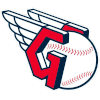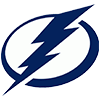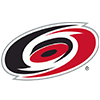Outside of draft season, the next few weeks may be the most significant in terms of setting the fate of your fantasy team. That's not because the games played during these weeks have any more value than any other, but because the gaps between the best and worst managers often widen during this time of year.
One significant factor is that this is the time of year where broader interest in fantasy baseball starts to wane. People were distracted by the Fourth of July long weekend, then they'll check back in for just a few days before the All-Star break, which is followed by another short gameweek (or an unusually long one, depending on your format). Many writers, podcasts and radio shows shift their focus to fantasy football around this time, and many players shift their focus that way as well, especially those whose baseball squads sit near the bottom of the standings.
Simply by being here, dear reader, you probably have an edge on your leaguemates, not because I promise to deliver any unusually prescient analysis but because your choice to continue reading baseball articles means you're staying more plugged in than many of your opponents. That allows you to take advantage of the next most significant factor that makes this period so important: the trade deadline.
The MLB trade deadline may still be nearly a month away, but if you can make your moves now and correctly predict which players will see their values rise or fall ahead
Outside of draft season, the next few weeks may be the most significant in terms of setting the fate of your fantasy team. That's not because the games played during these weeks have any more value than any other, but because the gaps between the best and worst managers often widen during this time of year.
One significant factor is that this is the time of year where broader interest in fantasy baseball starts to wane. People were distracted by the Fourth of July long weekend, then they'll check back in for just a few days before the All-Star break, which is followed by another short gameweek (or an unusually long one, depending on your format). Many writers, podcasts and radio shows shift their focus to fantasy football around this time, and many players shift their focus that way as well, especially those whose baseball squads sit near the bottom of the standings.
Simply by being here, dear reader, you probably have an edge on your leaguemates, not because I promise to deliver any unusually prescient analysis but because your choice to continue reading baseball articles means you're staying more plugged in than many of your opponents. That allows you to take advantage of the next most significant factor that makes this period so important: the trade deadline.
The MLB trade deadline may still be nearly a month away, but if you can make your moves now and correctly predict which players will see their values rise or fall ahead of time, you can get great value on the trade market. The window to deal away that fringe player whose good start is only going to get him traded to a platoon role on a contender is closing fast, and you'll want to cash in before that trade actually happens. There's additional incentive to jump the market if you're a buyer in a keeper or dynasty league, where an imbalance of MLB stats changing hands is expected in any deal. Why not get a few extra weeks of stats from your new players?
As we head into this important transitionary part of the season, here are some players whose recent performances you won't want to ignore.
RISERS
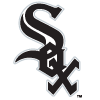 Luis Robert, OF, White Sox: The White Sox are floundering once again this season while again dealing with too many injuries to their core players. For once, however, Robert hasn't been part of the problem. After averaging 83 games played over the last two seasons, he reached that mark just 86 games into the schedule this year. Health has brought with it an excellent all-around performance, as he sits in the Top 10 in earned auction value among all hitters thanks to his .276/.337/.575 line, 24 homers and eight steals. Of the 11 hitters who've cleared the fence at least 20 times this season, only Shohei Ohtani and Ronald Acuna have stolen more bases or hit for a higher average. Robert's success comes with a worryingly high 28.7 percent strikeout rate, a huge jump over his 19.8 percent mark from the last two seasons, but he's made the most of his contact, posting a career-high 15.5 percent barrel rate. Robert's strikeout rate is actually trending up recently, sitting at 31.5 percent in June, but he also produced a 1.040 OPS with 11 homers that month, so the aggressive approach seems to be working.
Luis Robert, OF, White Sox: The White Sox are floundering once again this season while again dealing with too many injuries to their core players. For once, however, Robert hasn't been part of the problem. After averaging 83 games played over the last two seasons, he reached that mark just 86 games into the schedule this year. Health has brought with it an excellent all-around performance, as he sits in the Top 10 in earned auction value among all hitters thanks to his .276/.337/.575 line, 24 homers and eight steals. Of the 11 hitters who've cleared the fence at least 20 times this season, only Shohei Ohtani and Ronald Acuna have stolen more bases or hit for a higher average. Robert's success comes with a worryingly high 28.7 percent strikeout rate, a huge jump over his 19.8 percent mark from the last two seasons, but he's made the most of his contact, posting a career-high 15.5 percent barrel rate. Robert's strikeout rate is actually trending up recently, sitting at 31.5 percent in June, but he also produced a 1.040 OPS with 11 homers that month, so the aggressive approach seems to be working.
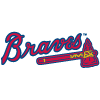 Michael Harris, OF, Atlanta: Harris began last season having never played above High-A and ended it as one of the league's best all-around players, hitting .297 with 19 homers and 20 steals in 114 games. It didn't seem overly optimistic to expect further growth this year given that he's just 22 years old, but that certainly wasn't the case early on. The young outfielder missed three weeks with a back injury in April and didn't hit well on either side of the injury, slashing .163/.246/.244 through his first 38 games. Even during that stretch, however, there were signs that he was going to be just fine. A .207 BABIP deserved much of the blame for his struggles, and it wasn't the result of a significant change in contact quality, as his 44.9 percent hard-hit rate was a near match for his 45.1 percent mark as a rookie. His 25.4 percent strikeout rate wasn't good, but it wasn't a meaningful change from his 24.3 percent mark the year prior. Sure enough, Harris has indeed turned things around and in dramatic fashion, no less. In his last 23 games, he's hitting .407/.416/.674. He's suddenly started making much more contact, striking out 10.1 percent of the time, and his hard hit rate remains strong at 47.4 percent. He's still stuck batting ninth, and it may take an injury for him to move up the order given the strength of the Atlanta lineup, but Harris looks like he'll be as valuable as a nine hitter can be the rest of the way.
Michael Harris, OF, Atlanta: Harris began last season having never played above High-A and ended it as one of the league's best all-around players, hitting .297 with 19 homers and 20 steals in 114 games. It didn't seem overly optimistic to expect further growth this year given that he's just 22 years old, but that certainly wasn't the case early on. The young outfielder missed three weeks with a back injury in April and didn't hit well on either side of the injury, slashing .163/.246/.244 through his first 38 games. Even during that stretch, however, there were signs that he was going to be just fine. A .207 BABIP deserved much of the blame for his struggles, and it wasn't the result of a significant change in contact quality, as his 44.9 percent hard-hit rate was a near match for his 45.1 percent mark as a rookie. His 25.4 percent strikeout rate wasn't good, but it wasn't a meaningful change from his 24.3 percent mark the year prior. Sure enough, Harris has indeed turned things around and in dramatic fashion, no less. In his last 23 games, he's hitting .407/.416/.674. He's suddenly started making much more contact, striking out 10.1 percent of the time, and his hard hit rate remains strong at 47.4 percent. He's still stuck batting ninth, and it may take an injury for him to move up the order given the strength of the Atlanta lineup, but Harris looks like he'll be as valuable as a nine hitter can be the rest of the way.
 Christian Yelich, OF, Brewers: 2018 NL MVP Yelich hasn't seen quite as dramatic of a fall and subsequent rebound as 2019 NL MVP Cody Bellinger has, but the Brewers star has seen plenty of ink spilled about him as well. You could be forgiven for thinking that his age-31 season would represent yet another step in the wrong direction, as players who deal with constant back issues don't tend to suddenly get healthier at that age. Yelich's back could certainly become problematic in the second half, but so far it's done nothing worse than cost him two games in mid-May. The result has been a season which has seen him make real strides in returning to MVP form:
Christian Yelich, OF, Brewers: 2018 NL MVP Yelich hasn't seen quite as dramatic of a fall and subsequent rebound as 2019 NL MVP Cody Bellinger has, but the Brewers star has seen plenty of ink spilled about him as well. You could be forgiven for thinking that his age-31 season would represent yet another step in the wrong direction, as players who deal with constant back issues don't tend to suddenly get healthier at that age. Yelich's back could certainly become problematic in the second half, but so far it's done nothing worse than cost him two games in mid-May. The result has been a season which has seen him make real strides in returning to MVP form:
| Year | K% | Barrel% | wRC+ | fWAR per 600 PA |
|---|---|---|---|---|
| 2018 | 20.7 | 12.2 | 167 | 7.1 |
| 2019 | 20.3 | 15.8 | 174 | 7.4 |
| 2020 | 30.8 | 12.1 | 114 | 1.7 |
| 2021 | 23.8 | 7.6 | 102 | 1.9 |
| 2022 | 24.1 | 8.2 | 111 | 2.0 |
| 2023 | 21.8 | 10.5 | 127 | 4.8 |
This latest version of Yelich is unlikely to earn MVP consideration, but he's a deserving (albeit snubbed) All-Star after spending three years as nothing more than an average regular. The encouraging aspect of his return to form is that he's taken steps forward in multiple areas. He's making more contact and harder contact than he did during his lost seasons, and he's also running more, which seems to be a sign of good health. He's heading toward the break in outstanding form, slashing .377/.467/.636 in his last 20 games.
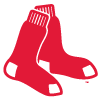 Brayan Bello, SP, Red Sox: The only thing that has me hesitant about writing up Bello as a riser is that he's been performing quite similarly for most of the year. Still, he deserves to be featured at some point, and his start last week against the Marlins in which he didn't allow a hit through seven innings before eventually breaking in the eighth makes for a great excuse. Bello stumbled to a 4.71 ERA in 13 outings as a rookie last year and didn't start this season on a good note, missing the first half of April with a forearm injury and giving up eight runs in 7.1 innings across his first two starts. Since then, however, he's gone 11 consecutive outings without allowing more than three earned runs, posting a 2.67 ERA in May and an even better 2.14 mark in June. Bello's fantasy value is held back by the fact that his 21.8 percent strikeout rate remains unremarkable, but he's cut his strikeout rate from 10.1 percent as a rookie to 7.1 percent this year while maintaining an excellent groundball rate (57.2 percent). Hoping Bello learns to put more batters away doesn't seem too unwise given that he recorded a 28.9 percent strikeout rate across his minor-league career, but he's already settling in as one of the league's best groundball specialists and doesn't need any more growth to be a productive arm.
Brayan Bello, SP, Red Sox: The only thing that has me hesitant about writing up Bello as a riser is that he's been performing quite similarly for most of the year. Still, he deserves to be featured at some point, and his start last week against the Marlins in which he didn't allow a hit through seven innings before eventually breaking in the eighth makes for a great excuse. Bello stumbled to a 4.71 ERA in 13 outings as a rookie last year and didn't start this season on a good note, missing the first half of April with a forearm injury and giving up eight runs in 7.1 innings across his first two starts. Since then, however, he's gone 11 consecutive outings without allowing more than three earned runs, posting a 2.67 ERA in May and an even better 2.14 mark in June. Bello's fantasy value is held back by the fact that his 21.8 percent strikeout rate remains unremarkable, but he's cut his strikeout rate from 10.1 percent as a rookie to 7.1 percent this year while maintaining an excellent groundball rate (57.2 percent). Hoping Bello learns to put more batters away doesn't seem too unwise given that he recorded a 28.9 percent strikeout rate across his minor-league career, but he's already settling in as one of the league's best groundball specialists and doesn't need any more growth to be a productive arm.
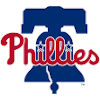 Craig Kimbrel, RP, Phillies: The Phillies' decision to sign Kimbrel over the winter interested but didn't exactly excite fantasy players, as his 295 NFBC ADP in March barely edged out teammate Seranthony Dominguez (301). The tepid reaction made sense given that Kimbrel had pitched his way off the playoff roster by the end of his tenure with the Dodgers while seeing his strikeout rate dip to a career-low 27.7 percent. Dominguez hasn't been a factor in the ninth inning, but it was Jose Alvarado who was the primary bullpen weapon in the early part of the season, recording five of the team's first nine saves before hitting the injured list with elbow inflammation on May 10. Kimbrel owned a 7.62 ERA and a 15.8 percent walk rate at that point, but he's risen to the occasion better than the Phillies could have hoped. Since the date of Alvarado's injury, Kimbrel owns 10 of Philadelphia's 15 saves and appears to be in vintage form, recording a 1.23 ERA in 22.0 innings, a number he's backed with a 45.1 percent strikeout rate and 6.1 percent walk rate. Alvarado has been back for nearly a month but simply hasn't been needed in the ninth, saving just one game since his return.
Craig Kimbrel, RP, Phillies: The Phillies' decision to sign Kimbrel over the winter interested but didn't exactly excite fantasy players, as his 295 NFBC ADP in March barely edged out teammate Seranthony Dominguez (301). The tepid reaction made sense given that Kimbrel had pitched his way off the playoff roster by the end of his tenure with the Dodgers while seeing his strikeout rate dip to a career-low 27.7 percent. Dominguez hasn't been a factor in the ninth inning, but it was Jose Alvarado who was the primary bullpen weapon in the early part of the season, recording five of the team's first nine saves before hitting the injured list with elbow inflammation on May 10. Kimbrel owned a 7.62 ERA and a 15.8 percent walk rate at that point, but he's risen to the occasion better than the Phillies could have hoped. Since the date of Alvarado's injury, Kimbrel owns 10 of Philadelphia's 15 saves and appears to be in vintage form, recording a 1.23 ERA in 22.0 innings, a number he's backed with a 45.1 percent strikeout rate and 6.1 percent walk rate. Alvarado has been back for nearly a month but simply hasn't been needed in the ninth, saving just one game since his return.
 Isaac Paredes, 1B/2B/3B, Rays: Paredes struggled to a 65 wRC+ in 57 games with the Tigers in 2020 and 2021 before moving to the Rays and producing a 116 wRC+ in 111 games last season, though his .205/.304/.435 slash line wasn't the sort that got fantasy managers particularly excited. Halfway through his second season in Florida, however, he seems to be taking significant strides, with his .267/.372/.494 slash line good for a 148 wRC+. His season numbers are buoyed by an excellent run over the last few weeks, which has seen him hit .326/.492/.587 with three homers in his last 15 games, striking out nine times to go with 13 walks. That plate discipline is key to his profile and is nothing new, as his 10.7 percent walk rate and 17.2 percent strikeout rate both sit within a point of his marks from last season. That keeps his floor respectably high, which is key, as his batted-ball profile remains unusual enough that it's hard to fully trust. His .227 ISO ranks 24th among qualified hitters, but his 5.1 percent barrel rate is poor and his 28.8 percent hard-hit rate is worse. His pull rate (53.5 percent) ranks third in the league, however, and his fly-ball rate (46.0 percent) ranks 21st. Hitting a barrage of fly-balls just over the left field wall isn't the most confidence-inducing way of posting good power numbers, but it's not unprecedented, with fellow third basemen Nolan Arenado and Alex Bregman demonstrating what the best version of that approach can look like.
Isaac Paredes, 1B/2B/3B, Rays: Paredes struggled to a 65 wRC+ in 57 games with the Tigers in 2020 and 2021 before moving to the Rays and producing a 116 wRC+ in 111 games last season, though his .205/.304/.435 slash line wasn't the sort that got fantasy managers particularly excited. Halfway through his second season in Florida, however, he seems to be taking significant strides, with his .267/.372/.494 slash line good for a 148 wRC+. His season numbers are buoyed by an excellent run over the last few weeks, which has seen him hit .326/.492/.587 with three homers in his last 15 games, striking out nine times to go with 13 walks. That plate discipline is key to his profile and is nothing new, as his 10.7 percent walk rate and 17.2 percent strikeout rate both sit within a point of his marks from last season. That keeps his floor respectably high, which is key, as his batted-ball profile remains unusual enough that it's hard to fully trust. His .227 ISO ranks 24th among qualified hitters, but his 5.1 percent barrel rate is poor and his 28.8 percent hard-hit rate is worse. His pull rate (53.5 percent) ranks third in the league, however, and his fly-ball rate (46.0 percent) ranks 21st. Hitting a barrage of fly-balls just over the left field wall isn't the most confidence-inducing way of posting good power numbers, but it's not unprecedented, with fellow third basemen Nolan Arenado and Alex Bregman demonstrating what the best version of that approach can look like.
FALLERS
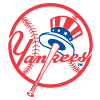 Luis Severino, SP, Yankees: Maybe the injuries have finally taken their toll on Severino, or maybe he'll turn things around as he gets further away from the lat strain that cost him most of the first two months of the season. In any case, the Severino we've seen so far this year isn't close to good enough, as he owns a 6.30 ERA and 1.65 WHIP in eight starts. He actually looked better initially after returning from his injury, allowing just two runs across his last two starts. Zoom in on just his last six outings and his ERA and WHIP rise to 8.16 and 1.99, respectively. His 9.6 percent walk rate over that stretch is poor, but his 16.4 percent strikeout rate is a much bigger worry, as it's nowhere remotely close to the 28.8 percent mark he recorded over the previous five seasons. His velocity is also a cause for concern, as he averaged 97.4 mph with his fastball in his first two outings and just 96.1 mph across his last six. That figure dipped to 95.2 mph in his last start, which saw the Cardinals put nine runs on the board.
Luis Severino, SP, Yankees: Maybe the injuries have finally taken their toll on Severino, or maybe he'll turn things around as he gets further away from the lat strain that cost him most of the first two months of the season. In any case, the Severino we've seen so far this year isn't close to good enough, as he owns a 6.30 ERA and 1.65 WHIP in eight starts. He actually looked better initially after returning from his injury, allowing just two runs across his last two starts. Zoom in on just his last six outings and his ERA and WHIP rise to 8.16 and 1.99, respectively. His 9.6 percent walk rate over that stretch is poor, but his 16.4 percent strikeout rate is a much bigger worry, as it's nowhere remotely close to the 28.8 percent mark he recorded over the previous five seasons. His velocity is also a cause for concern, as he averaged 97.4 mph with his fastball in his first two outings and just 96.1 mph across his last six. That figure dipped to 95.2 mph in his last start, which saw the Cardinals put nine runs on the board.
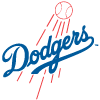 Bobby Miller, SP, Dodgers: I wrote up Miller as a riser just three weeks ago, at which point he owned a 0.78 ERA, 0.83 WHIP and 26.4 percent strikeout rate through his first four major-league starts. There was no reason to believe he'd remain quite that dominant going forward, but his full, balanced repertoire gave reason to believe that he'd be able to weather the ups and downs of an MLB season better than someone like Bryce Miller, who hit a wall after a similarly excellent first few outings. Since being featured in that article, Bobby has hit a wall of his own, posting a 9.39 ERA and 1.89 WHIP over his last three outings, while his strikeout rate collapsed to 16.2 percent. His last start did represent a step in the right direction, but allowing three runs in 5.2 innings with just four strikeouts against the lowly Royals hardly counts as a clear win. The interesting thing about his recent slump is that it comes as his slider has seemingly gotten even better. Its velocity has jumped from 89.9 mph in his first four starts to 92.1 mph, and that hasn't come with a loss of movement. It has, however, come with a loss of effectiveness, with hitters batting .421 against the pitch in his last three starts after hitting just .091 off it in his first four. It's possible he'll need to give back some velocity in exchange for better command and better results.
Bobby Miller, SP, Dodgers: I wrote up Miller as a riser just three weeks ago, at which point he owned a 0.78 ERA, 0.83 WHIP and 26.4 percent strikeout rate through his first four major-league starts. There was no reason to believe he'd remain quite that dominant going forward, but his full, balanced repertoire gave reason to believe that he'd be able to weather the ups and downs of an MLB season better than someone like Bryce Miller, who hit a wall after a similarly excellent first few outings. Since being featured in that article, Bobby has hit a wall of his own, posting a 9.39 ERA and 1.89 WHIP over his last three outings, while his strikeout rate collapsed to 16.2 percent. His last start did represent a step in the right direction, but allowing three runs in 5.2 innings with just four strikeouts against the lowly Royals hardly counts as a clear win. The interesting thing about his recent slump is that it comes as his slider has seemingly gotten even better. Its velocity has jumped from 89.9 mph in his first four starts to 92.1 mph, and that hasn't come with a loss of movement. It has, however, come with a loss of effectiveness, with hitters batting .421 against the pitch in his last three starts after hitting just .091 off it in his first four. It's possible he'll need to give back some velocity in exchange for better command and better results.
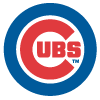 Seiya Suzuki, OF, Cubs: I'm far from out on Suzuki. I even purchased his shirsey recently before attending a game at Wrigley Field (albeit only because no Christopher Morel merchandise was available). I believe the player the Cubs thought they were signing, the one whom THE BAT X projects for a 129 wRC+ the rest of the season, is still in there. A year and a half into his MLB career, however, he's still yet to put together an extended period of impressive performances, as this graph from FanGraphs indicates:
Seiya Suzuki, OF, Cubs: I'm far from out on Suzuki. I even purchased his shirsey recently before attending a game at Wrigley Field (albeit only because no Christopher Morel merchandise was available). I believe the player the Cubs thought they were signing, the one whom THE BAT X projects for a 129 wRC+ the rest of the season, is still in there. A year and a half into his MLB career, however, he's still yet to put together an extended period of impressive performances, as this graph from FanGraphs indicates:
Suzuki has certainly shown flashes where he looks like a star, most notably both ends of last season as well as May of this year, but he hasn't been able to avoid some pretty significant slumps. His latest slump dates back to the beginning of June and has seen him hit .176/.260/.242 with zero homers and zero steals in his last 24 games. A neck issue that has cost him some time over the past week may account for part of that, but Suzuki's downturn may also stem from the fact that the Cubs have asked him to alter his approach. Suzuki is typically a very patient hitter, but he's also one of the team's strongest bats, so the Cubs have asked him to try to do more damage. He swung at 37 percent of pitches through the first two months but has jumped up to 41.4 percent since the start of June. The results have been disastrous so far, so it remains to be seen whether the Cubs allow him to revert to his previous approach or if they'll aim to stick things out until Suzuki starts finding success as a more aggressive hitter.
 Nolan Gorman, 2B/3B, Cardinals: In the early part of the season, Gorman was a bright spot on a Cardinals squad that didn't have nearly enough of them. He kept his OPS north of 1.000 as late in the season as May 25, slashing .297/.389/.613. In 30 games since then, however, his decline has been dramatic:
Nolan Gorman, 2B/3B, Cardinals: In the early part of the season, Gorman was a bright spot on a Cardinals squad that didn't have nearly enough of them. He kept his OPS north of 1.000 as late in the season as May 25, slashing .297/.389/.613. In 30 games since then, however, his decline has been dramatic:
| Period | PA | BB% | K% | Barrel% | AVG/OBP/SLG | wRC+ |
|---|---|---|---|---|---|---|
| Through May 25 | 180 | 12.8 | 26.1 | 15.6 | .297/.389/.613 | 169 |
| Since May 26 | 111 | 8.1 | 36.9 | 8.2 | .129/.198/.218 | 17 |
The good version of Gorman strikes out a bit too much but shows more than enough power and plate discipline to make up for it. The bad version of Gorman still has respectable power and walks at a league-average rate, but he strikes out far too much to be anything close to productive. His jump in whiffs is matched by declines in his underlying plate discipline metrics. His chase rate jumped from 27.0 percent in the former stretch to 31.6 percent in the latter, while his contact rate on pitches outside the zone dipped from 53.0 percent to 43.2 percent. (League average in that latter category is 62.3 percent this season.) Sliders, in particular, have killed him. He's been worth -4.9 runs against that pitch since the start of his slide, the fifth-worst mark among qualified hitters. The result has been that Gorman has lost his hole on the No. 3 spot, regularly batting sixth or seventh in recent weeks, and is nowhere close to picking up starts against southpaws.














